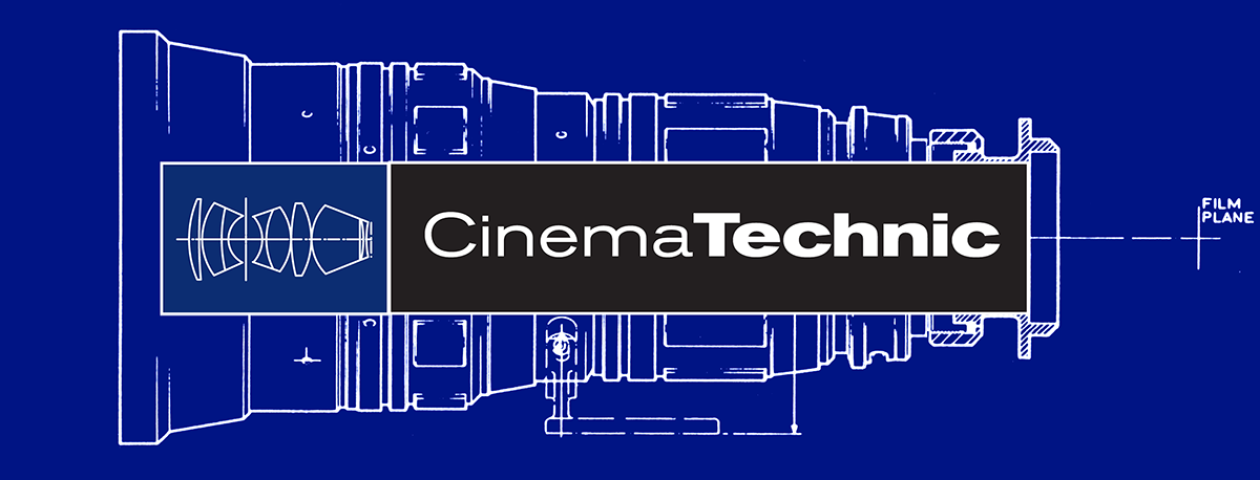
Updated 13 May 2020
Kinoptik of Paris, France manufactured a large series of prime lenses for both 16mm and 35mm cinematography. Except for the well known 5.7mm f1.8 and 9.8mm f1.8 Tegeas, most of these lenses are relatively obscure, especially in the U.S.
16mm & 35mm Formats
1.9mm f1.9 Super Tegea

5.7mm f1.8 Tegea (Super 16mm, fixed focus)
The 5.7mm Tegea, along with the Angenieux 5.9mm, were the two fixed-focus ultra wide prime lenses for 16mm cinematography. The 5.7mm is a 16mm format version of the Kinoptic 9.8mm, described below.
The front sections (ahead of the square internal filter slot) are identical on the two lenses. Most of the description of the optical characteristics of the 9.8mm apply to the 5.7mm.
Compared to the Angenieux 5.9mm, the Kinoptik 5.7mm had the advantage of covering Super 16 format. The photos here show a later version that was rated at T2.0 (possibly improved coatings?). I owned the lens pictured in the early 2000’s.

The deep projection of the rear housing of this lens made it incompatible with mirror-reflex 16mm and Super 16 cameras such as the ARRI 16SR. The very valuable mirror shutter could be scratched by an unmodified lens.

CinemaTechnic developed a conversion in 2002 that provided the mirror clearance for this lens to be used on the ARRI 16SR. The special PL adapter only allowed the lens to be mounted in one of two positions, so the mirror shutter could not be damaged.
The modified lens covered Super 16 and was used on the S16mm feature Southern Justice.
For best image quality, back focus on the Kinoptik 5.7mm must be set VERY precisely, not at infinity but at the lens hyperfocal distance for 5.7mm at f1.8. A focusing collimator can be used, but few have enough range. Another approach would be to use a lens test projector with adjustable back focus. The ideal way to set it would be with a finite distance setup such as the Zeiss K9 MTF.
9.0mm f1.5 (16mm format)
9.8mm f1.8 T2.3 Tegea (35mm, focusing)
The Kinoptik 9.8mm Tegea had a lengthy reign as the widest 35mm prime lens available for cinematography. This lens incorporated a large retrofocus converter mounted ahead of an internal filter slot sized for 2 inch square filters. The rear of the lens behind that slot was a conventional compact prime lens that would fit into an ARRI Standard mount.

The 9.8mm Tegea is a rectilinear super wide angle lens. Due to the very wide angle of view objects in the corners of the frame will be greatly stretched. Perspective is also greatly exaggerated.
The 9.8mm has a focusing mount which makes it more versatile than the 5.7mm Super 16 version.
The Kinoptik 9.8mm was used for several shots in Stanley Kubrick’s Clockwork Orange and for the maze scene in The Shining. The lens has a very unique focus characteristic that is difficult to describe. The 5.7mm has the same optical character and I noticed the unique optical signature when I used the lens to shoot several shots in the feature Southern Justice.
I assume Kubrick switched to the Zeiss Distagon 10mm T2.1, which is far superior optically, as the unique look of the 9.8mm is absent from his last two films.
12.5mm f2.5 APO
12.5mm f1.5 APO

18mm f1.8 APO
25mm f2.0 APO
32mm f1.9 APO
35mm f1.3 APO
40mm f2.0 APO
50mm f2.0 APO
50mm f2.0 Macro-Apochromat
100mm f2.0 APO
100mm f2.0 Macro-Apochromat
150mm f2.5 APO
150mm f2.5 Macro-Apochromat
210mm f2.8 Special-Cine
300mm f3.5 Special-Cine
500mm f5.6 Special-Cine
1000mm f8.0 Kinoptar
Equipment for optical testing of vintage lenses
This is a new page, in development. Researching vintage cine lenses and creating web pages about them takes a great deal of time and effort. If you would like to see more content added to this page, please let us know via email:

©2020 Jorge Diaz-Amador, all rights reserved
In accordance with the U.S. copyright act of 1976, the duplicating, uploading and electronic sharing of any part of this document without the permission of the author constitutes unlawful piracy and theft of the authors intellectual property.
If you would like to use material from this document other than for review purposes, prior written permission must be obtained by contacting the publisher
